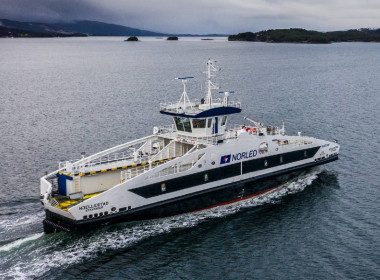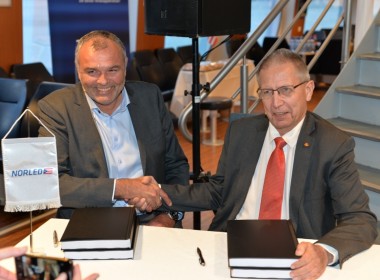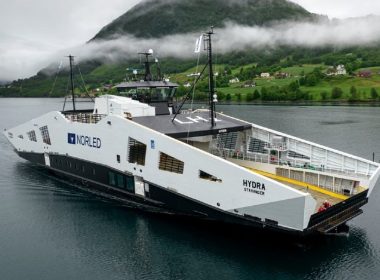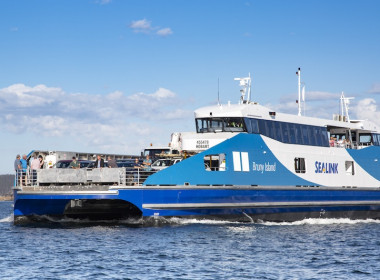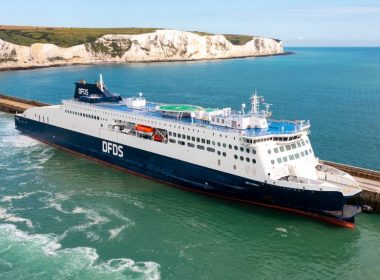AWARDS 2022 | Best Electric Ro-Pax – Ryfylke – LMG Marin
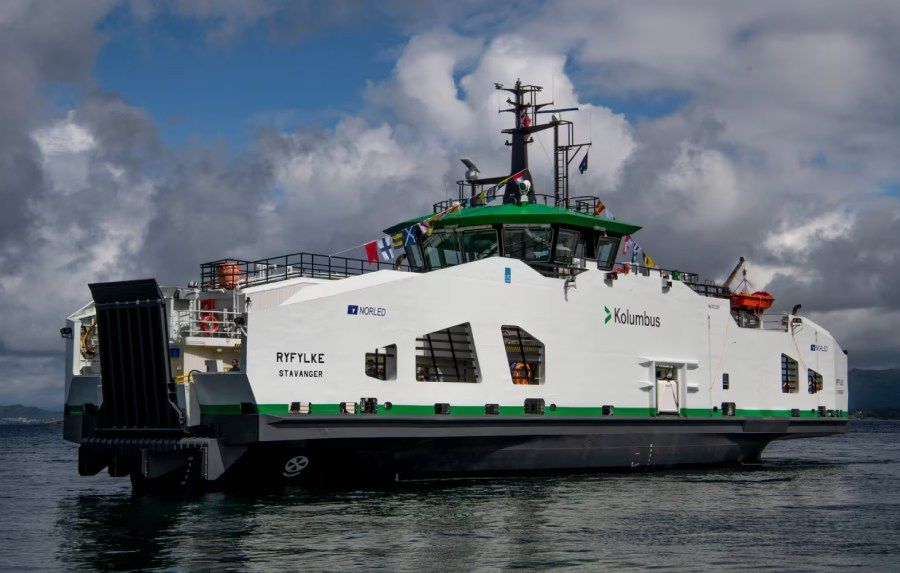
Best Electric Ro-Pax – Ryfylke – LMG Marin
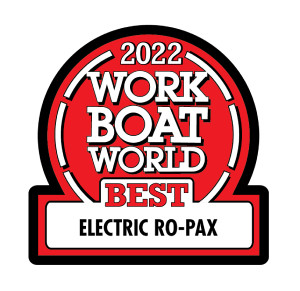
This very practical, safe, and effective small Ro-Pax is perfect for the routes that it will operate on along the west coast of Norway. It makes full and proper use of the country’s abundant supply of clean hydro electricity.
“The ferry can operate for one full-day schedule visiting up to 25 ports without needing shore charging,” Torbjørn Bringedal, Managing Director of LMG Marin, told Baird Maritime. “Shore charging only needed overnight.”
The vessel also boasts flexibility in ramp design in that it is able to approach terminals and regular quays and operate in a lifeline support role transporting passengers, vehicles, and general cargo. One end of the vessel is fitted with a regular bow ramp solution for standard terminals while the other end has a more sophisticated Ro-Ro ramp and a cargo crane.
“Energy efficiency of aluminium hulls on small and slow-going double-ended ferries is necessary,” added Bringedel. “In these sizes of vessels, the advantages compared to steel hulls are significant.”
LMG Marin was presented with a challenge as the company had to design a complex Ro-Ro ramp from scratch, since no specialised Ro-Ro equipment provider was involved in the newbuilding project.
“We also learned how the expanded use of extruded panel profiles ensures weight savings compared to plate welded aluminium hulls. The typical building methods traditionally used by yards specialising in high-speed ferries have proven efficient.”
Bringedal said that key interface performance is important. Especially important is ensuring the trim sensitivity of a lightweight vessel without a ballasting system while retaining the ability to load and unload heavy cargo such as lorries.
“There is an increasing preference for green technologies and the use of alternative fuels, as indicated by the growing number of customer requests for such features,” Bringedal told Baird Maritime when asked about present trends in naval architecture. “We are also seeing an increase in naval vessel newbuilding projects, and this includes both combatant and non-combatant vessels.”
As regards the passenger vessel industry, proven green technology currently in use in Norwegian waters is also being adapted for use in both small and large vessels overseas.
“Battery capacity on passenger vessels is also growing with some examples having capacities of as much as 100 MWh, while shore charging capacities of around 50 MW are also being discussed,” added Bringedal. “Batteries are even being fitted in vessels operating in areas where we used to think that hydrogen was the only viable alternative to conventional propulsion.”
Bringedal said that in Norway, the vehicle ferry fleet is already decarbonised to a large extent, while demand for zero-emission, high-speed passenger ferries continues to grow.
“The Scandinavian workboat industry will be characterised by green technologies becoming standard,” he added. “In particular, batteries and even hydrogen fuel will see greater use in vessels. For Norway, meanwhile, we believe that the country’s workboat industry will be dominated by aquaculture vessels and high-speed ferries in the coming years.”
For a list of the 2022 “Best Of” award winners, please click here.




